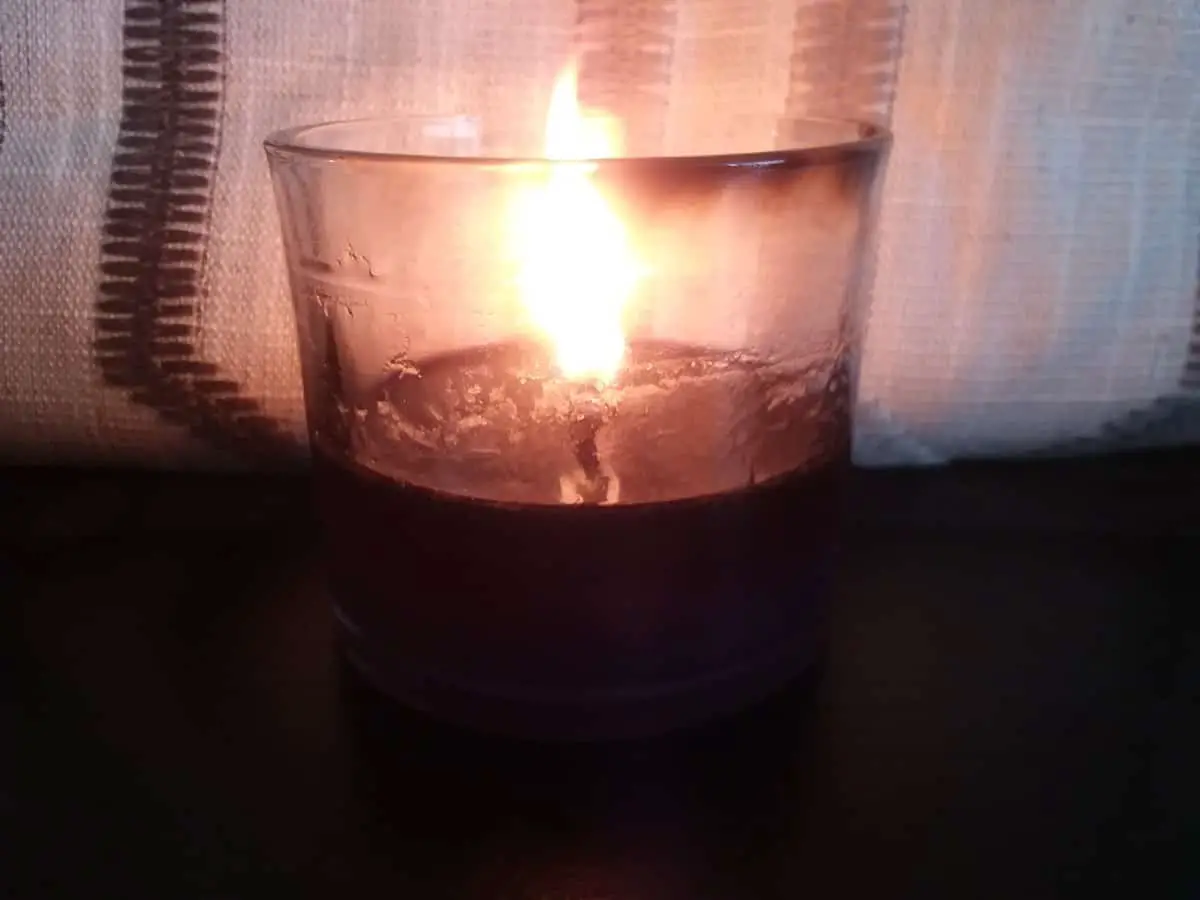Candles have a bad rap. One reason people don’t like candles is they are seen as dangerous. Candles can start fires. However, if you educate yourself on the facts and take safety precautions you can prevent a candle house fire.
The National Fire Protection Association (NFPA) publishes its annual “Fire Loss in the United States” report every September for the previous year. The results for “Fire Loss in the United States During 2018” are included in this article.
How many house fires are caused by candles? From 2012-2016, an estimated 8,200 house fires were caused by candles, which resulted in an annual average of 770 injuries, 80 deaths, and $264 million in damage. This is an average of 23 house fires caused by candles each day. Candles caused 2% of reported home fires, 3% of home fire deaths, 7% of home fire injuries, and 4% of the direct property damage in home fires.
This report and others on the NFPA website gave several statistics regarding house fires and those caused by candles and candle safety. In this article, I review the facts of candle fires and discuss some safety tips to keep your candle burning safe.
Candle Fire Statistics: Where Do Candle Fires Start in the Home?
There were a total of 1.3 million fires in the U.S. in 2018. A home fire occurs every 87 seconds.
Of those, 363,000 fires (73% of structure fires) were in homes (residential) in 2018, compared to 357,000 home fires in 2017. The 363,000 house fires in 2018 represents an increase of 2% from the previous year (2017).
How many of those are from candles? The annual “Fire Loss” report for 2018 doesn’t say. However, I found some other resources on the NFPA website that provided some good information. From 2012-2016, an estimated 8,200 house fires were caused by candles.
Over one-third (37%) of house fires caused by candles start in the bedroom, even though candles are most often used in the living room. From 2012-2016, these fires caused 30% of the associated deaths and 50% of the associated injuries.
We must continue to strive to decrease home candle fires. Between 2011-2015 candle fires ranked second among the major causes in injuries per thousand fires and third in average loss per fire.
What about 2016-2019? I couldn’t find any information on the rankings for these years.
Ages at Risk of Candle Fire Deaths or Injuries
Elderly adults (over age 75) have the highest risk of death from candle fires in the home, at almost two and a half times (2.4x) the average, or general, population. Elderly age 85 and older have 4.5 times the risk of the general population. Children ages 5-9 have almost twice (1.9x) the risk of the general population, or average.
However, the opposite is true for injuries. Elderly and children are at lowest risk of candle fire injury than the general population, whereas adults ages 20-24 have the highest risk of non-fatal injuries from candle fires in the home.
Most of the people killed or injured by candle house fires between 2011-2015 were female. Most of the elderly deaths were due to mobility or disability issues in the victims. Also, in many of the cases, the smoke alarms were not working and there was no sprinkler, or containment, system to keep the fire from spreading.
When Are Candle Fires Most Common?
The majority of candle fires and fire deaths occur during the month of December, with January and November being second and third, respectively. In December, 12% of home candle fires began with decorations compared to 4% the rest of the year.
Christmas Day is the most common day of the year for candle house fires. New Year’s Day is the second most common day of the year for candle house fires, with New Year’s Eve being the third most common day.
It may be fairly obvious that most candle fires occur in the evenings/night and on the weekends. According to NFPA.org, during 2011-2015, the most common time frame for candle house fires was between 6:00-9:00 PM with 9:00 PM to midnight being the second most common. I couldn’t find any data on a more recent time frame.
What is the Most Common Cause of Candle House Fires?
Over half (60%) of the fires started by candles occur when the candle flame gets too close to a combustible or flammable material, such as a curtain, bedding, furniture, or decorations. In December, 12% of home candle fires began with decorations compared to 4% the rest of the year.
Decorations are usually the first to ignite and are the most common cause of candle house fires. Remember that most home candle fires occur in the month of December. So, with Christmas Holiday décor abundant in December, it makes sense that most candle fires occur during this time.
Candle fires generally happen when the candle is left unattended or stays lit overnight. From 2012-2016, falling asleep was a factor in 11% percent of the home candle fires and 21% of the associated deaths.
Another factor or cause of candle house fires is “misuse,” which is generally described as when children play with the candles.
Other causes of candle house fires have been found to include items embedded in or decorating a candle (secondary ignitions), excessively high flames, and candle holders that overheated or ignited.
The Role of Candles and Resulting House Fires During Power Outages
Causes of, or reasons for, power outages include a temporary power outage (such as due to weather), the power being shut off intentionally (termination of service), and the occupant just moving in (the power hadn’t been turned on yet).
As many as 75% of home candle fires have been caused by candles being used during a power outage (according to data from 1992 to 2010).
In one incident, during a power outage, the candle was allowed to burn all the way down and the coffee table it was sitting on caught fire.
In another incident, a family had just moved in, so the electricity had not been turned on yet. They were using candles for light and bedding caught fire.
Fire Safety and “Candle With Care” Tips from NFPA (and me)
On average, 23 home candle fires are reported each day. The overall message from this data that we can learn is proper candle safety, what to do, and knowing what to avoid, or not do!
- Keep candles at least 1 foot (12 inches) from anything that can burn. Keep candles out of windy or drafty areas and away from anything that can easily catch fire (e.g., curtains, furniture, carpet, bedding, or paper). Fires have been caused by a candle being left near an open window and the curtain blows into a candle, something falls on it, or the candle burn downs and ignites nearby combustibles.
- Extinguish all candles before you leave a room or go to bed! Never leave a candle burning overnight or when are you tired, ready for, or going to bed. Blow out all candles when you are leaving a room for an extended period of time or start your nighttime routine. Don’t tell yourself you will blow it out later, because you may forget or fall asleep!
- NEVER leave a child unattended near a burning candle. NEVER leave a child alone in a room with a burning candle.
- Keep candles out of reach of children and pets. NFPA suggests you keep matches and lighters up high and out of children’s reach, in a locked cabinet.
- Use candle holders that are sturdy and won’t tip over easily. Containers should not tip easily.
- Put candles on a sturdy, uncluttered surface. Don’t put candles on an unstable object or uneven surface, such as on top of a clock radio.
- Always burn candles in an appropriate container or on an appropriate surface. Always burn candles on a heat-resistant surface. Small candles, such as tea lights, can melt plastic surfaces, such as the top of a TV and the side of a bath tub.
- When lightening and extinguishing candles, do so with attention and care. Keep your hair and any loose clothing away from the flame. Do not splash the wax, which could land on a nearby flammable surface or combustible material. It is generally advisable to use a special candle snuffer or candle quencher, because blowing out candles can send sparks and hot wax flying (but you’d really have to be pushing out air to do that, imo!).
- Do NOT burn a candle all the way down. Put it out before it gets too close to the bottom.
- NEVER use a candle if oxygen is used in the home.
- Clean and trim wicks to 1/8 to ¼ inch before lighting.
Related Question
Do candles burn themselves out? Never leave a candle unattended! However, if you happen to leave a candle burning, it could burn itself out if it has a wick with a metal bottom.
This does not mean you should EVER purposely or knowingly leave a candle burning, thinking it will burn itself out! Allowing a candle to burn to the very bottom could cause fire or injury.
The bottom of a container candle could break or explode. Burning a pillar candle to the very bottom could scorch the surface you are burning the pillar candle on.
Not to mention, this could cause the wax to leak and the wick to fall out! And if the wick falls onto a flammable surface, you will have a fire in a quick minute!
If you would like more information about what to do if you realize you left a candle burning, please read my blog post “Do Candles Burn Out on Their Own?”



